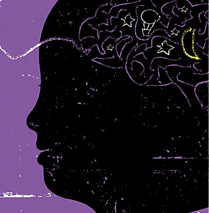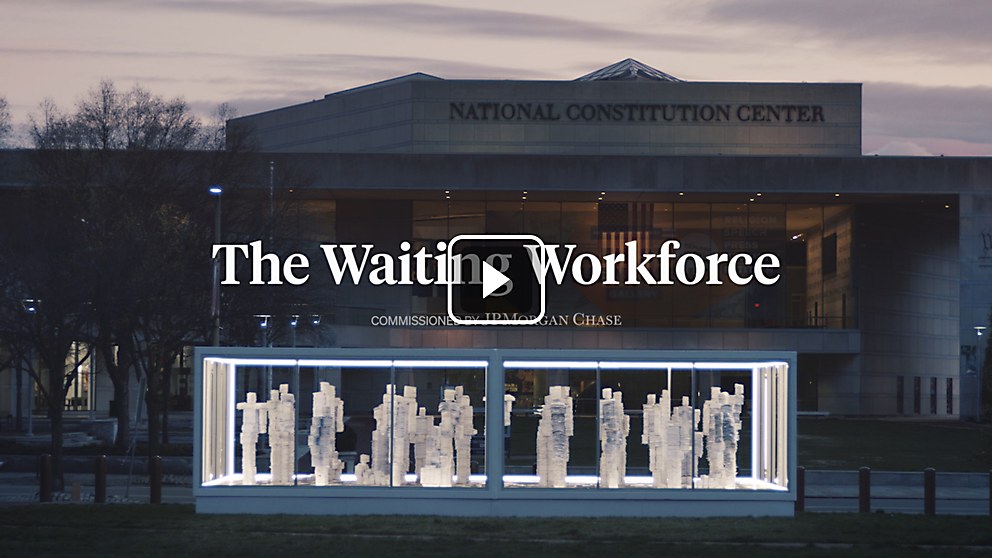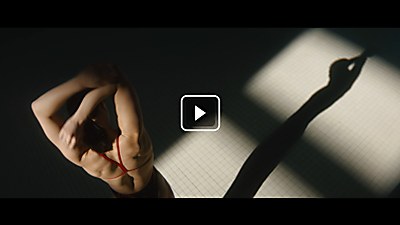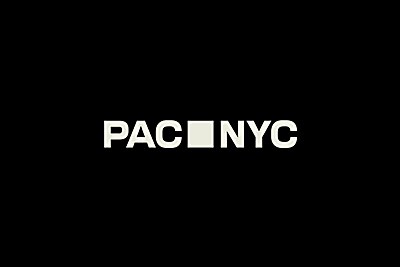Responses by Haywood Watkins III, group creative director, Droga5.
Background: The Waiting Workforce, our installation for financial company JPMorgan Chase, aims to raise awareness about the challenges Americans with criminal records face in finding meaningful employment due to the cumbersome record expungement process. The target audience is “opinion influencers”—policymakers, lawmakers and the general public—with a focus on advocating for the passage of clean slate legislation nationwide. Through the art installation and accompanying film featuring real people impacted by the expungement process, the project seeks to highlight the scale of the issue and the importance of automatic record clearance in facilitating reintegration into society.
Design thinking: We sought to create a striking visual representation of the barriers faced by individuals with past criminal records; therefore, we crafted statues out of 1.8 million pieces of actual expungement paperwork. Using the paperwork as the primary building material, we shined a light on the main obstacle that prevents people from accessing meaningful employment opportunities in a tangible way.
Challenges: Navigating the authentic stories of the real people impacted by the expungement process. Each individual had a unique and deeply personal experience, and ensuring their stories were respectfully and accurately represented required a delicate balance of empathy, sensitivity and integrity. We wanted to honor their experiences while effectively conveying broader systemic issues. This involved extensive communication, active listening and collaboration to ensure that their voices were heard and their stories were told with the nuance and dignity they deserve.
Favorite details: We are most proud of our decision to feature real people through the accompanying centerpiece film that lives on the dedicated microsite. Their stories bring authenticity and depth to the project, humanizing the issue and emphasizing the urgent need for automatic record clearance. By giving these individuals a platform to share their experiences, we hope to shed light on the challenges imposed by the burdensome expungement process and inspire action towards a more just and inclusive society.
New lessons: Working on this project opened the agency’s eyes to the scale of those impacted by this issue. While all were aware of the challenges faced by people with criminal records, we did not fully grasp the issue’s scale until delving into the statistics. Learning that one in three Americans has a criminal record truly underscores the magnitude of the problem and highlights the urgent need for systemic change.
Visual influences: The installation was deeply influenced by two key visual elements—expungement paperwork and waiting poses from real people affected by this issue. The paperwork serves to create a powerful and tangible representation of the barriers faced by individuals with criminal records. And we drew inspiration from iconic poses of Americans waiting in the past, infusing the installation with a sense of historical resonance. Each pose was carefully chosen to reflect not only the physical stance but also the symbolic significance it carries. From the stoic determination of individuals awaiting their chance for redemption to the hopeful anticipation of a brighter future, these poses serve as visual metaphors for the journey of those impacted by the expungement process. Moreover, by embracing body diversity in our selection of poses, we emphasized the inclusivity of our message and highlighted the diverse range of individuals affected by the issue.













